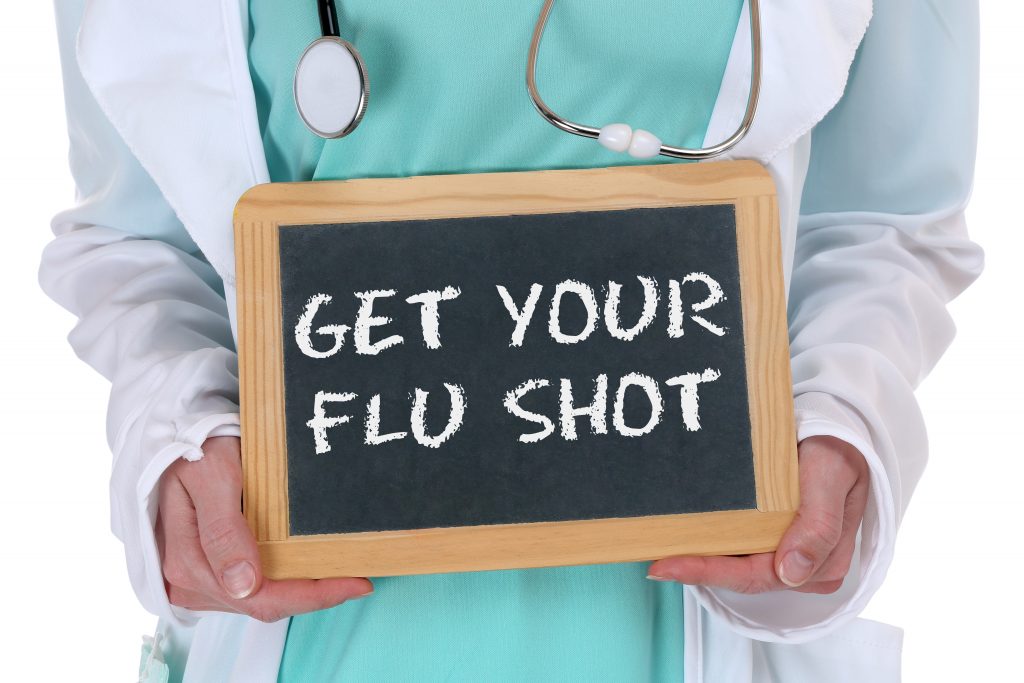The flu shot: 5 things to consider
This year, the Australian Government is urging all Australians (over 6 months of age) to get a flu vaccination before winter.
Getting vaccinated helps reduce the spread of the flu in our communities. If we have fewer cases of flu this year, we’ll relieve the strain on hospitals and healthcare providers. This is more important than ever due to the COVID-19 pandemic.
Perhaps you get a flu vaccination every year. Or perhaps this will be your first time. Here are five things to consider.
1. What is a flu vaccination?
The flu is a viral illness that can be caused by different strains of influenza virus.
The flu vaccine causes antibodies to develop in your body about two weeks after vaccination. Then, if you get infected, these antibodies help your body fight and kill the virus.
The most common strains of the flu virus change every year. The vaccine differs slightly every year to match these changes. So, you should get the influenza vaccine this year, even if you’ve had it before.

2. Does the vaccine give you the flu?
The vaccine can’t give you the flu because it doesn’t contain any live virus.
You may, however, notice these common side effects:
- pain, redness or swelling at the injection site
- body aches, tiredness or a slight fever
Talk to your doctor or health professional if you’re worried about side effects.
3. Which groups of people are particularly vulnerable?
Some groups of people can have very serious, even life-threatening, symptoms if they get the flu:
- those aged 65 years and over
- pregnant women
- Aboriginal and Torres Strait Islander people over 6 months of age
- children between 6 months and 5 years
- those with a range of chronic conditions, such as:
- heart disease
- coronary artery disease
- asthma and COPD
- diabetes
- cancer
For these groups the flu vaccination is free. You can check with your doctor to find out if you’re eligible for a free vaccination.
4. Where can I get a flu shot?
You can get your flu shot from your GP or book one at a pharmacy.
If you’re not eligible for a free vaccination, you can get one for a small cost.
Because of the COVID-19 pandemic, let your doctor or pharmacist know before your appointment if you have:
- fever, shortness of breath or a cough
- returned from overseas in the last 14 days
- recently been in contact with someone diagnosed with COVID-19
5. What’s the difference between the flu and COVID-19?
Some of the symptoms of the flu and COVID-19 are similar, such as the early symptoms of fever and cough. And these viruses also spread the same way: via small virus-containing droplets produced when an infected persons coughs or sneezes.
That’s why behaviours that help slow the spread of COVID-19 will also slow the spread of the flu:
- wash your hands frequently with soap and water, including before and after eating, and after going to the toilet
- cover your cough and sneeze, dispose of tissues, and wash your hands
- avoid contact with others by staying 1.5 metres from people
- stay at home if you feel unwell.
Here are some other ways you can fight the flu:
Infographic courtesy of Healthdirect Australia.
There are some key differences between COVID-19 and the flu:
- Following infection, symptoms appear more quickly with influenza than COVID-19
- Because of this, influenza can spread faster
- The risk of severe illness seems to be higher for COVID-19 than influenza
Now is the time to be taking action to help minimise the spread of influenza in Australia. Help keep our communities safe and well in 2020 by getting a flu vaccination today.
© InstantScripts
Level 8 / 637 Flinders St.,
Docklands VIC 3008


